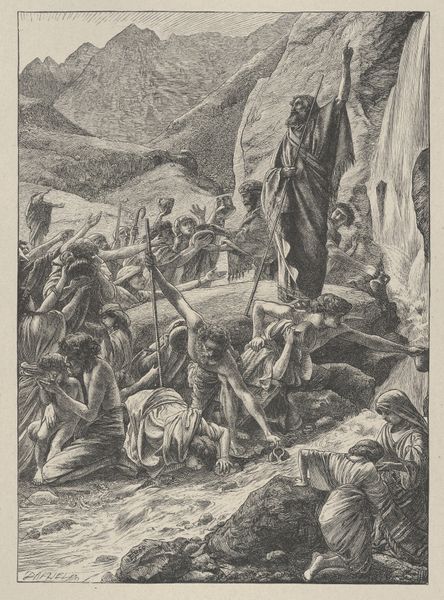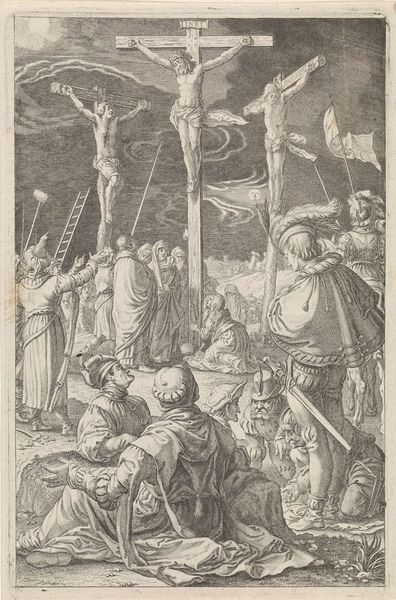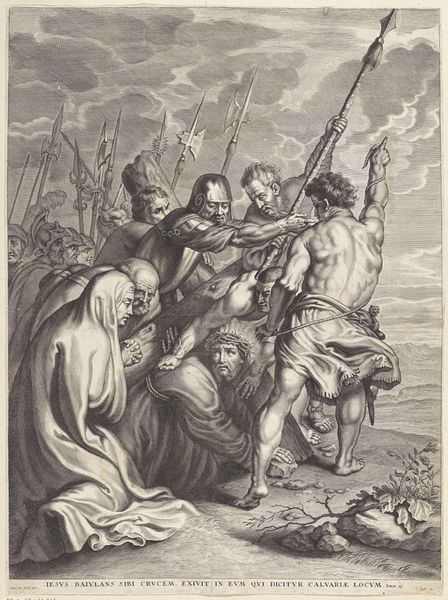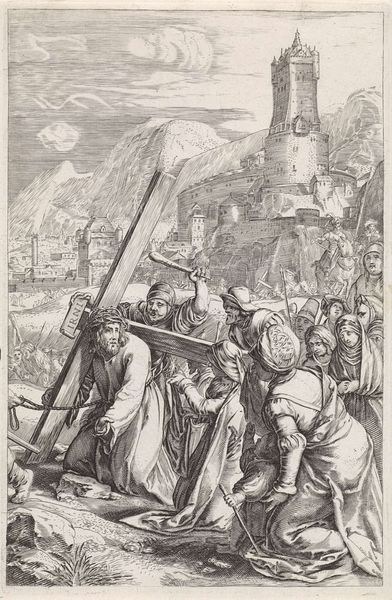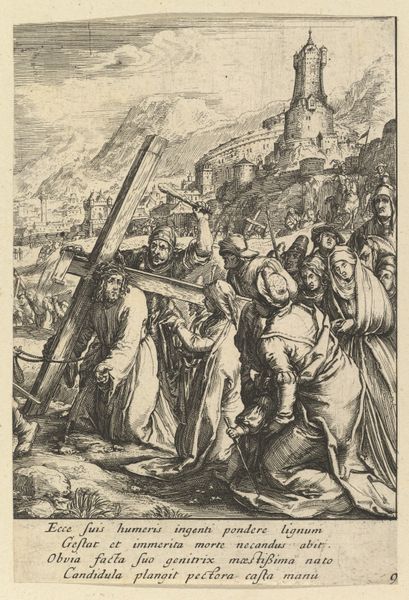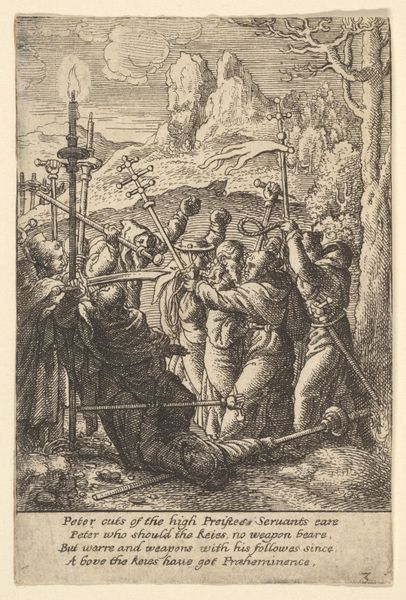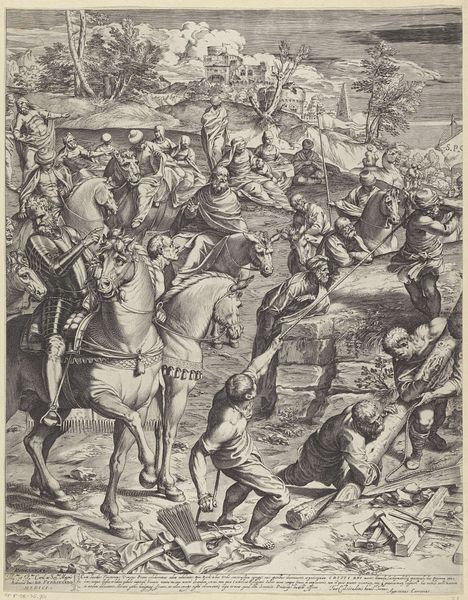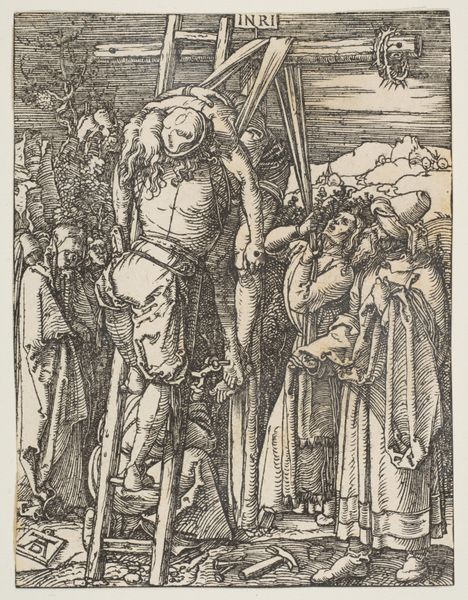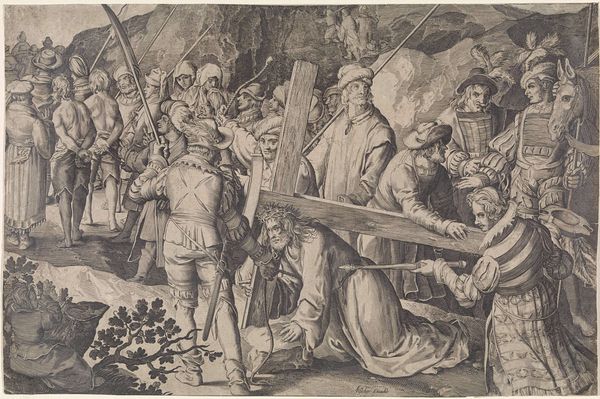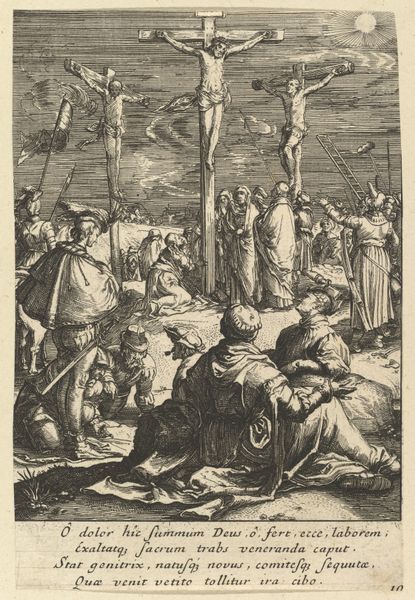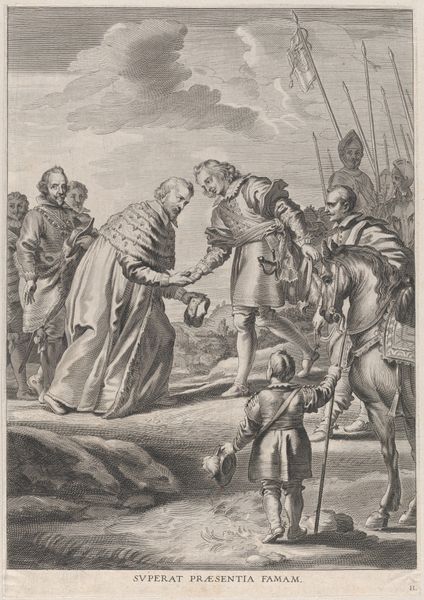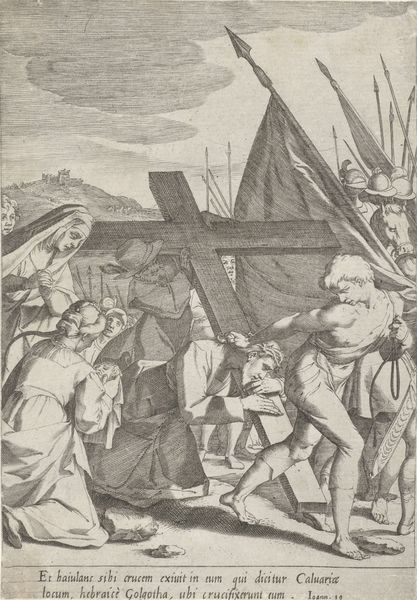
Dimensions: height 511 mm, width 401 mm
Copyright: Rijks Museum: Open Domain
Curator: This dramatic image is entitled “Crucifixion of Christ,” an engraving created by Agostino Carracci in 1589. Editor: It's arresting. The figures, rendered so starkly in monochrome, are caught in such dynamic poses of anguish and brutality. Curator: The medium, engraving, is crucial here. Consider the physical labor involved. Carracci painstakingly carved these lines into a metal plate to produce this print, highlighting the role of reproductive media in disseminating religious imagery. It removes painting’s aura of uniqueness, no? Editor: Precisely! This wasn't intended for private contemplation, but for broader dissemination. It serves as a potent reminder of the Church's visual rhetoric during the Counter-Reformation, striving to maintain its power. Curator: And notice the details he captures: the rough texture of the wood, the musculature of the figures, the contrasting fabrics. Each line requires intention, labor, contributing to the overall effect of realism, even in its heightened, theatrical mode. Editor: Absolutely, and look at the theatrical composition. The body of Christ is elevated, a focal point amidst the chaotic scene. This theatricality directly serves the religious narratives intended to inspire an emotional response in the viewer. Curator: What I appreciate is that tension between the skilled craft involved in creating the image itself versus the cruelty and injustice being depicted, the artifice versus the purported 'realism'. What can be made from human hands to influence and even harm. Editor: A poignant intersection. Ultimately, I'm left pondering how this relatively inexpensive printed image became a powerful vehicle for conveying religious and political messages to a wider audience. The printing press forever shifted art’s cultural power. Curator: Exactly. The interplay of meticulous craftsmanship and societal forces shaped both its production and reception. Editor: And it shows that visual and material culture are, inevitably, connected with religion and authority.
Comments
No comments
Be the first to comment and join the conversation on the ultimate creative platform.
